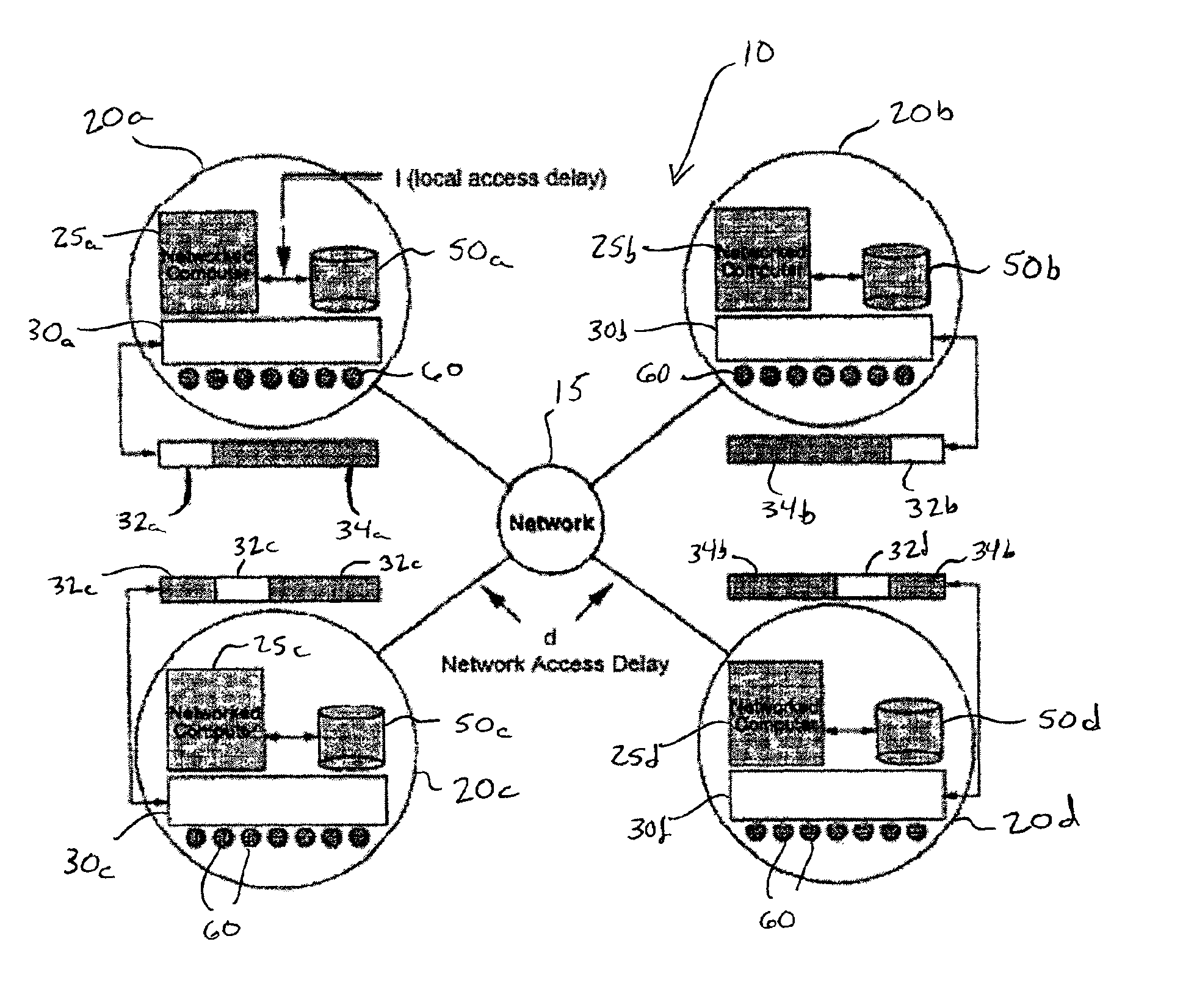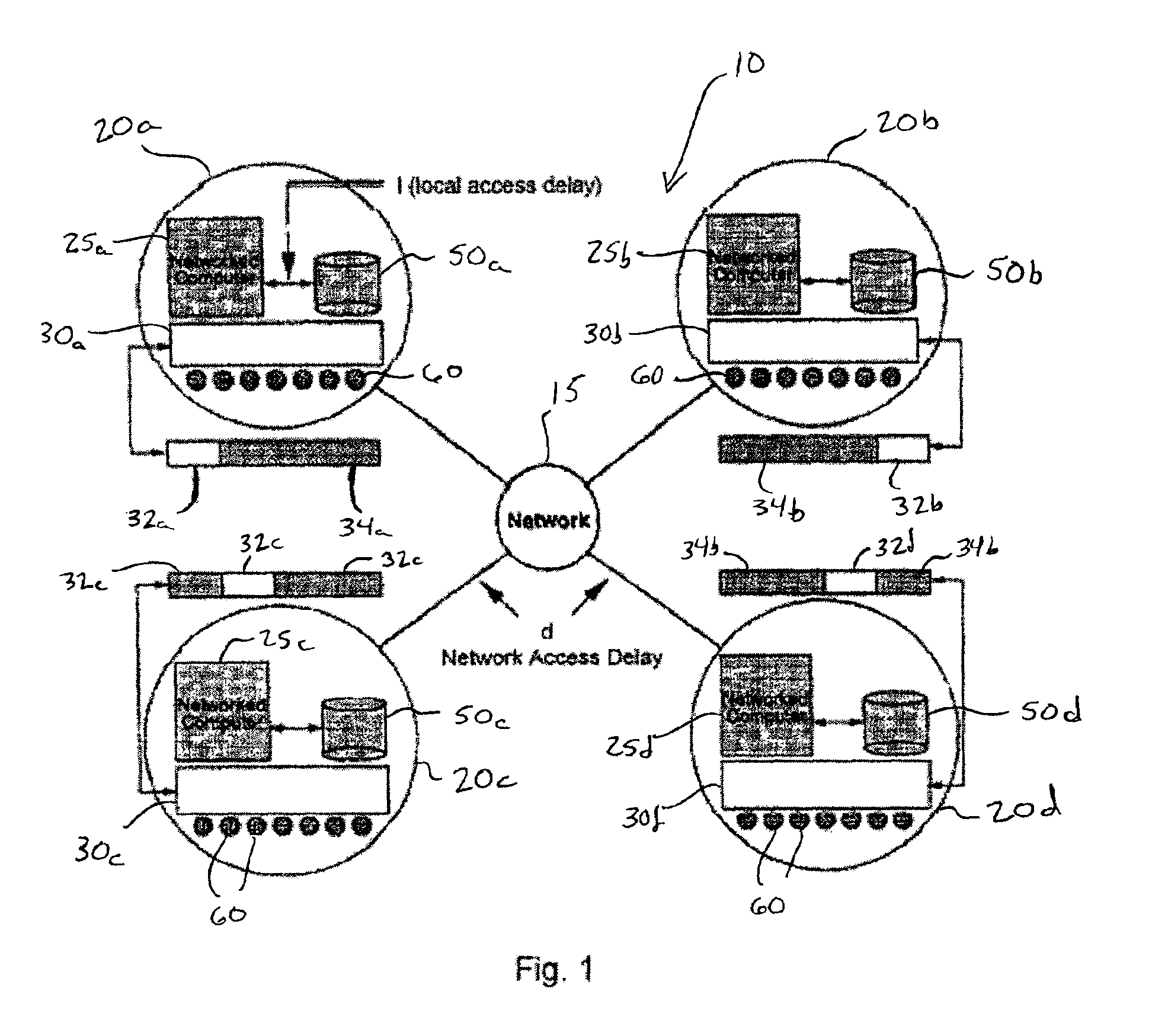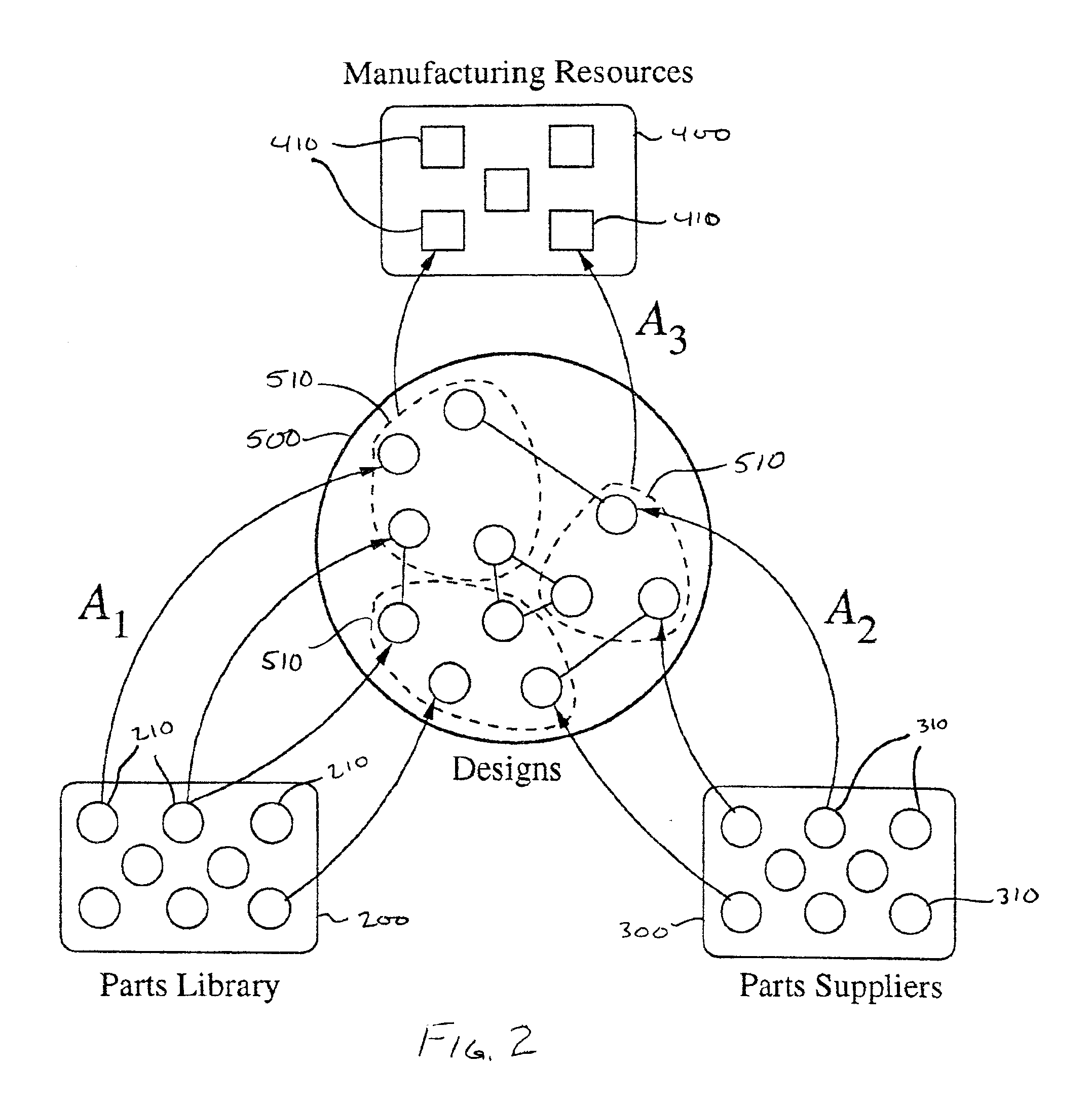System and method for time-efficient distributed search and decision-making using cooperative co-evolutionary algorithms executing in a distributed multi-agent architecture
- Summary
- Abstract
- Description
- Claims
- Application Information
AI Technical Summary
Benefits of technology
Problems solved by technology
Method used
Image
Examples
Embodiment Construction
[0043]In centralized mode of operation, such as described in U.S. Pat. No. 6,249,714, a network distributed search and design application using evolutionary agents has one node where an evolutionary agent is resident. The remaining nodes in the network participate in the search by simply providing information to the evolutionary agent upon request. In this mode, a search of the full space of the system takes place from only the one node occupied by the evolutionary agent, while the remaining nodes simply respond to queries from the agent. Based on the responses received, the evolutionary agent creates and evaluates virtual designs, and uses proportional selection and stochastic variational operations to evolve virtual designs for evaluation.
[0044]The present invention, by contrast, provides a solution method and architecture in which multiple evolutionary agents operating at different, distributed nodes all work to solve the same problem simultaneously.
[0045]Referring now to the dra...
PUM
 Login to View More
Login to View More Abstract
Description
Claims
Application Information
 Login to View More
Login to View More - R&D
- Intellectual Property
- Life Sciences
- Materials
- Tech Scout
- Unparalleled Data Quality
- Higher Quality Content
- 60% Fewer Hallucinations
Browse by: Latest US Patents, China's latest patents, Technical Efficacy Thesaurus, Application Domain, Technology Topic, Popular Technical Reports.
© 2025 PatSnap. All rights reserved.Legal|Privacy policy|Modern Slavery Act Transparency Statement|Sitemap|About US| Contact US: help@patsnap.com



